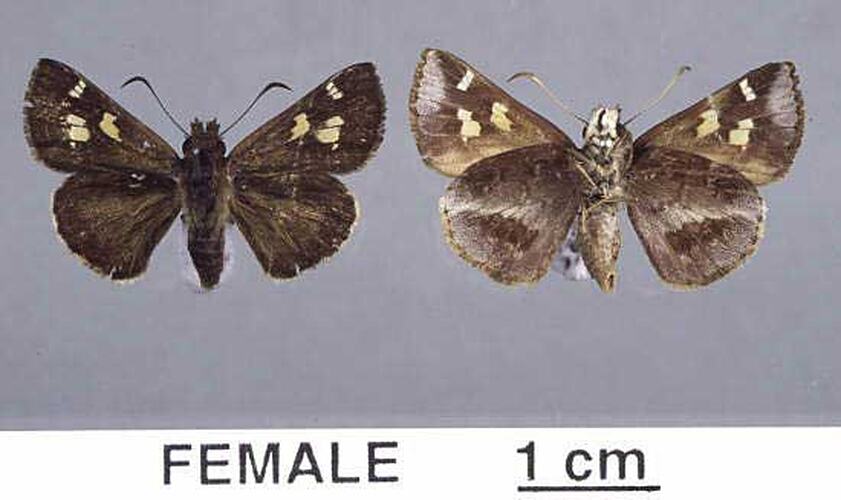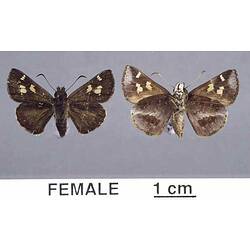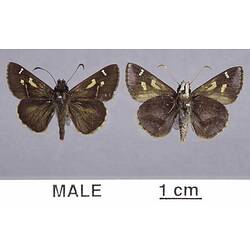General Description
Above: dark with pale yellow spots and markings, including an L-shaped marking. Males with a central linear patch of sex scales. Below: Lilac mixed with reddish-brown (males) with a broad whitish-lilac band (females).Wingspan up to 2.5 cm.
Biology
These butterflies fly fast and close to the ground, often feeding on white flowers such as blackberry. To attract females, males release pheromones from a patch of special sex scales on their wings. The caterpillars feed at night and shelter during the day in tubular shelters they make from leaves. They eat various grasses including Weeping Grass, Microlaena stiploides, and basket grasses, Opsismenus spp.
Distribution
South-eastern mainland Australia.
Habitat
Damp gullies in open eucalypt forest along the coast and foothills of the ranges.
More Information
-
Animal Type
-
Animal SubType
-
Brief Id
These small, fast-moving butterflies move close to the ground and feed on the nectar of white flowers.
-
Maximum Size
2.5 cm
-
Habitats
-
Diet
Nectar
-
Endemicity
-
Commercial
No
-
Taxon Name
-
Scientific Author
(Felder, 1862)
-
Common Name
Lilac Grass-skipper
-
Other Names
Doubleday's Skipper
-
Kingdom
-
Phylum
-
Subphylum
-
Class
-
Subclass
-
Superorder
-
Order
-
Suborder
-
Superfamily
-
Family
-
Subfamily
-
Genus
-
Species Name
doubledayi



